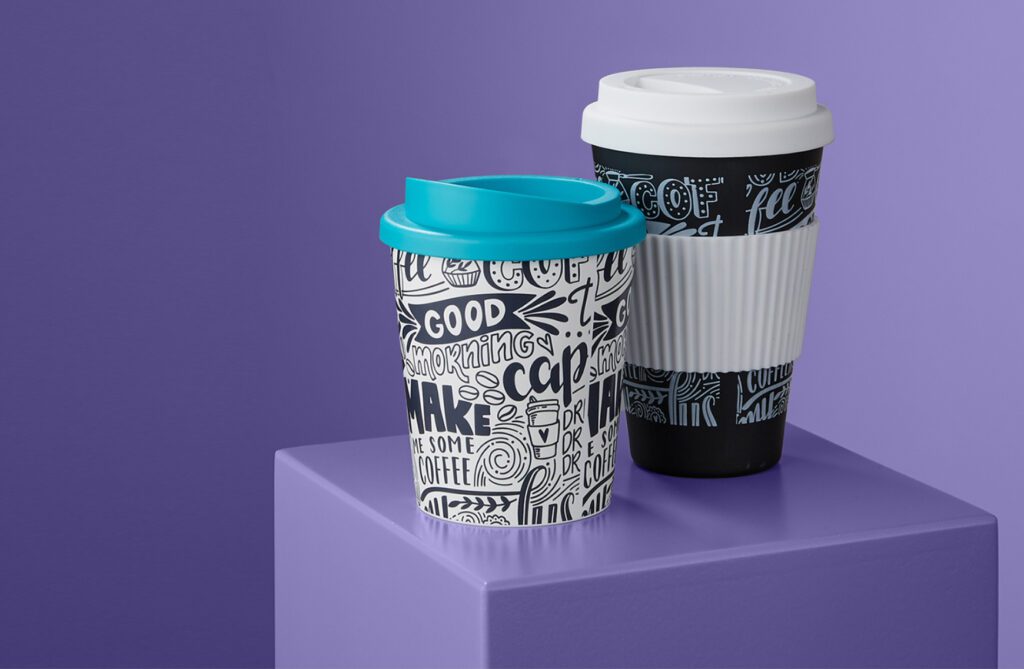Everything you need to know about eco-friendly merchandise

In 2020, over 62% of executives said a business sustainability plan is vital to stay competitive. A further 22% said it would be in the future.
If your exec board falls into that 84%, chances are you’re already looking into ways to improve sustainability. If you’re not already, it’s probably high on your priority list for 2021.
While there are thousands of ways to improve how eco-friendly your business is, many overlook one of the easiest ways; switching to eco-friendly merchandise. But, when you consider the volume of branded merchandise you use, switching to eco-friendly variants could seriously inch you closer to your sustainability targets.
If that sounds like something you’d like for your business, this post is for you. Inside, we’ll tell you everything you need to know about eco-friendly merchandise. Let’s get started.
What is eco-friendly merchandise?
Anything labelled eco-friendly is manufactured sustainably. This means that the natural resources we use to create the product are replenished as fast as they’re consumed.
Bamboo, for example, regrows ludicrously fast! Since we can regrow the volume of bamboo at roughly the same rate we consume it, it’s considered an eco-friendly material.
As for eco-friendly merchandise, this is simply any merchandise product that’s manufactured using a sustainable source material like bamboo.
And, though it’s often contested, paper – which is made from wood – is also a natural and renewable material with the added benefit that as trees grow they absorb Co2 from the atmosphere!
What should I look out for when sourcing eco-friendly merchandise?
Where it’s coming from and how it’s shipped
When advising new clients on sustainable products, one of the first things we recommend is to check where your products are coming from and how they’re shipped.
If you’re truly committed to sustainability, you’ll want to know sustainable transportation has been used throughout the supply chain. If it hasn’t, then you could be inadvertently supporting a business that isn’t in tune with your eco-friendly values.
The processing required to make the product
While it’s super important your eco-friendly merchandise is made from sustainable materials, if the energy consumption used to make it is too high, it might not be as sustainable as you think.
Truly eco-friendly merchandise isn’t manufactured using resource-hungry methods. Or, at least, the manufacturer can offset their emissions. So make sure to check how it’s made with your supplier.
It’s made from sustainable materials
This one’s a no-brainer.
We’ve already mentioned bamboo as a great choice. But, there are plenty of other options to consider such as jute, cork, corn and cotton.
You can learn more about why they’re excellent eco-friendly substitutes here.
It’s pretty amazing just how many eco-friendly options are available out there. We’ve supplied notebooks made from apple core, pencils made from recycled money and even a pen made from wheatstraw!
Click here to view our full eco-friendly merchandise range.
Your supplier holds a credible certification
Unfortunately, there are a lot of businesses out there claiming to produce sustainable products when they’re not.
While there’s not much you can do about that, what you can do is check they have a credible certificate from an independent body attesting to their sustainability.
As an example, we’re Sedex – Supplier Ethical Data Exchange – certified. Sedex are a world-leading not-for-profit who share information on a range of businesses sustainability practices.
As for paper, we’re FSC – Forest Stewardship Council – certified. The FSC are a global organisation who certify forests all over the world to ensure they meet the highest environmental and social standards.
Wrap-up
There you have it, a quick crash course in everything you need to know about eco-friendly merchandise.
Hopefully, you have a much better understanding of what it means to be eco-friendly and what to look out for when sourcing products.
If you’d like to learn more about how you can use merchandise to improve your businesses sustainability, make sure to check out some of the useful additional articles listed below!
